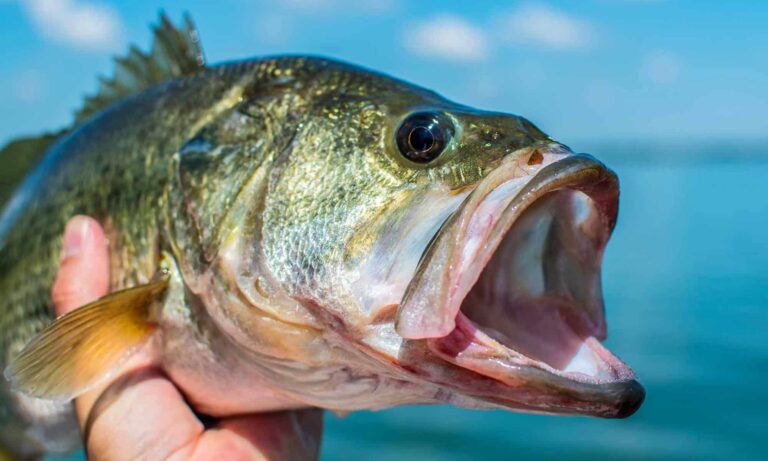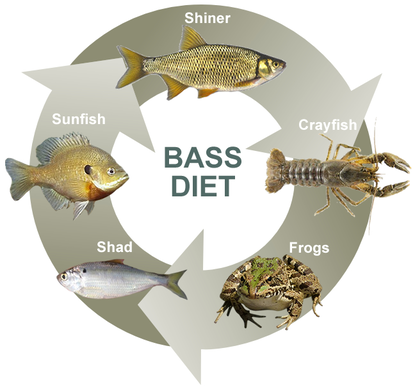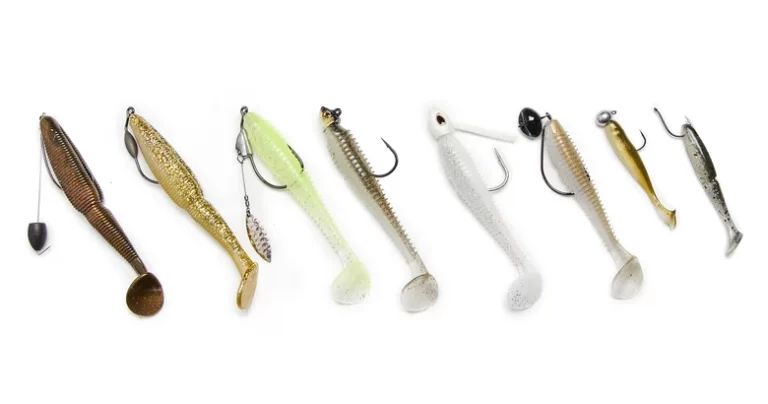Pre-Spawn Pond Bass Fishing: Catching Pond Bass in Early Spring

The majority of bass fishing I do is in little neighborhood ponds an small bodies of water.
It is much easier and less stressful to fish the banks of small ponds than having to deal with a big bass boat on a large lake.
I fish these ponds all year round, but there is something special about the pre-spawn time period.
This time of year used to intimidate be, but once I learned the following information about pre-spawn pond bass fishing, I had tons of success and itched to get out to the pond.
When is the Pre-Spawn for Bass in Ponds?
The exact time of year that the pre-spawn begins will depend on what part of the country you are in.
However, as a general rule, the pre-spawn begins as soon as air temperatures begin to rise.
For the first week or two of rising temperatures, the water temps will remain roughly the same.
But the bass can feel and recognize when air temperatures are on the rise, and will immediately begin the late winter early spring transition.
The pre-spawn usually takes a week or two in order to start taking noticeable effect.
In large lakes, it could take up to a month. But in small ponds, the water warms up faster and bass start transitioning faster.
Generally, in the Southern states, the pre-spawn will begin in early January.
In middle states, it will begin in early February.
And in Northern states, it will begin in early March.
Is the Pre-Spawn Good for Bass Fishing?
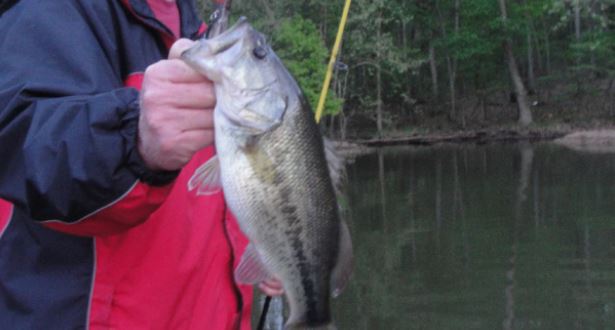
Yes, the pre-spawn is great for bass fishing. During the pre-spawn, bass are forced to move shallower and eat more.
They have to do this in order to prepare for the spawn. The spawn takes a lot of energy and bass do not really eat at all during the spawn.
So after a long winter, they have to quickly bulk up so that they have enough energy to create and protect their fry.
The pre-spawn and the fall are really the only two times of the year when bass need to store up energy because they are about to go a period of time without much food.
Because of this, they are my two favorite seasons to fish for bass.
Where are Pre-Spawn Pond Bass?
As you can probably guess, pre-spawn bass are in between their winter areas and their spawning areas.
In the winter, pond bass will go into the deepest areas of the pond. This is usually just the middle of the pond.
The spawning areas are up in the shallow flats with a hard bottom.
If you can find these hard bottom flats, draw a mental line from them to the middle of the pond. This is where the pre-spawn pond bass are.
How Do You Catch Pre-Spawn Bass in a Pond?
Catching bass in the pre-spawn is actually very similar to late fall bass fishing.
Fish are active and looking to eat, but the water is still quite cold, so bass metabolism is slow.
When their metabolism is slow, they have less energy and aren’t quite as willing to chase after prey.
Pre-spawn bass are a bit more willing to expel energy since they know warmer water is on the way.
Typically I will use bigger slower lures in pre-spawn ponds. As the water temperatures rise, pond bass begin feeding a bit more on bluegill and crawfish.
I love throwing crawfish and bluegill colors during the pre-spawn months.
Best Pre-Spawn Pond Bass Fishing Lures
Also Read: Best Lures for Pond Bass in Spring
1. Chatterbait

Because of the huge amount of vibration that chatterbaits put off, they can be fished relatively slow.
The intense vibration also gets so many aggressive pre-spawn bass to bite. Chatterbaits are my favorite pre-spawn pond search bait.
Search baits are essentially baits that have lots of sound and, or vibration. They search out and draw bite from aggressive bass.
A red chatterbait is a great crawfish lure and is the go-to pre-spawn lure for many anglers.
I will start each fishing trip with a search bait to find out if bass are in an aggressive mood. If they are, they will certainly hit a chatterbait.
Dark red and brown chatterbaits seem to produce the best in pre-spawn ponds.
2. Lipless Crankbait
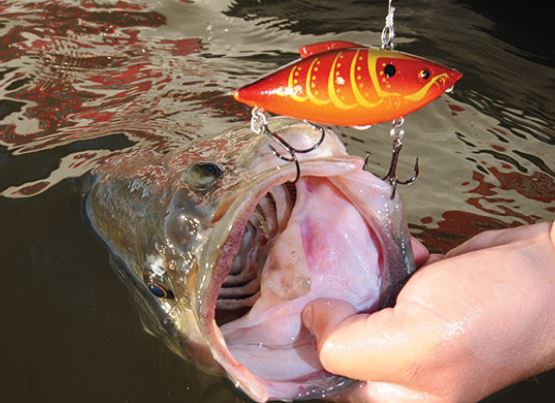
Not all small ponds have shad in them. But if they do, lipless crankbaits are my go-to pre-spawn lure.
I implement the Yo-Yo technique. Fluttering a lipless crankbait up and down slays early spring transitioning bass.
Dying shad flutter and flash around the water. If your pond does have shad, they also have a early spring transition.
They move around in large schools and bass really hone in on them.
Make sure to look closely at your line as the lipless crankbait falls, because this is when most of the bites will come in colder water.
3. Jerkbait

If the more aggressive search baits aren’t working, I know bass are not super aggressive.
So I will tie on a suspending jerkbait. Jerbaits are a great way to match the hatch with realistic body styles and colors, while being able to fish slowly.
Jerbaits are great for catching bass are closer to their winter areas than their spawning areas.
The jerkbait is another shad imitation. Yes, you can get bluegill patterns, but the body shapes are primarily shad imitations.
So jerkbaits will work a bit better in ponds with shad.
4. Finesse Swimbait

Since the water is still cold, not all bass are aggressive all the time. You always need to be willing to implement finesse techniques in cold water.
A little paddle tail swimbait is the perfect blend of finesse, while still being able to cover plenty of water.
Finicky bass will eat soft plastics much more than hard or skirted baits. A tasty little swimbait has scent instead of sound.
It is not a search bait that will call in aggressive bass. But the subtle vibration is enough to attract nearby or clear water bass.
And the scent of the soft plastic convinces finicky bass to bite.
5. Drop Shot
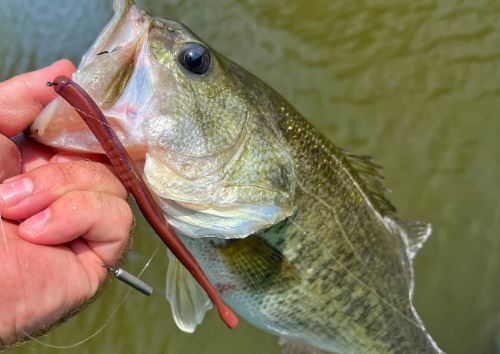
I usually like to cover water in the pre-spawn, but sometimes if is just not working.
Every pre-spawn period has 1-3 cold fronts that come in. Pond bass are especially effected by these because it can drop the water temperature significantly.
During these cold fronts, I always tie on a drop shot. Bass will either go out a bit deeper, or just hunker down in one spot until the front is over.
Being able to fish a soft plastic very slowly and hover it in front of the bass’s face is a game changer.
Finesse worms and minnows work wonderful on a drop shot.
When Does the Pre-Spawn End?
Thankfully, it is very easy to tell when the pre-spawn season has ended and the pond is now in the spawning period.
All you need to do is look around the shallow flats. If there are bass spawning, then bass have begun the transition into the spawn.
If there are no spawning bass, then it is still the pre-spawn. The image below shows when the spawn generally starts based on geographic location.
But this will very from pond to pond, so really all you need to do is take a look at the shallows and look for bass beds.
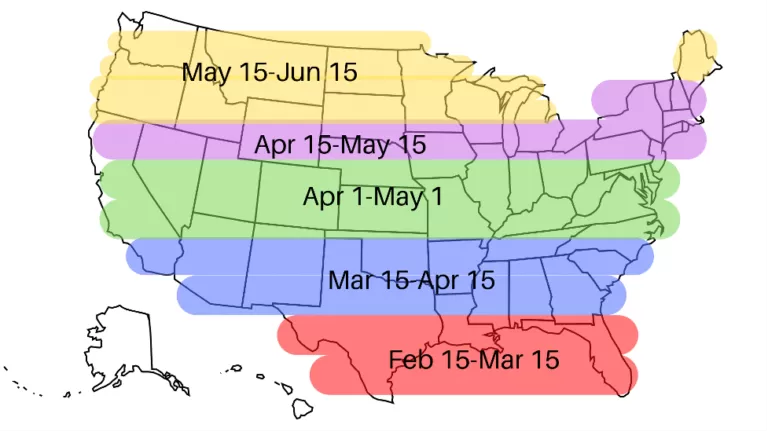
FAQ
What are the Indicators that Bass Are in the Pre-spawn?
Signs that bass are in the pre-spawn stage include an increase in water temperature, the presence of male bass in shallow areas preparing nests, and heightened feeding activity as bass prepare for the spawning season.
Where are the Best Areas to Target?
Prime locations for pre-spawn bass in ponds include shallow flats, creek channels, submerged vegetation, and areas with cover such as fallen trees or rocks.
Staging areas where bass gather before spawning, such as transition zones between deep and shallow water, are also productive spots.

Also Read: The 5 Best Pre-Spawn Bass Lures
Reeling this In
Don’t be afraid of bass fishing just because the water is still cold. Bass become active and aggressive long before water temperatures get high.
The pre-spawn is a great time to head out to your local pond and catch lots of bass.
It does require the proper techniques and lures to effectively fish for pre-spawn bass in ponds.
But once you have learned and implemented the right strategies, you will start catching.

